Discover 35 hidden attractions, cool sights, and unusual things to do in Memphis (United States). Don't miss out on these must-see attractions: Graceland, Memphis Zoo, and Mississippi River Museum. Also, be sure to include National Civil Rights Museum in your itinerary.
Below, you can find the list of the most amazing places you should visit in Memphis (Tennessee).
Table of Contents
Graceland
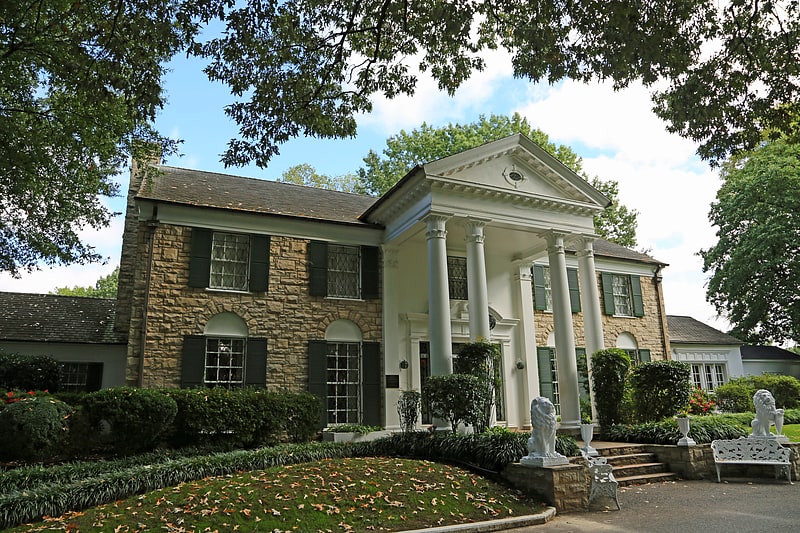
Famed former home of Elvis Presley. Graceland is a mansion on a 13.8-acre estate in Memphis, Tennessee, United States, once owned by singer and actor Elvis Presley. His daughter, Lisa Marie Presley, inherited Graceland after his death in 1977. Graceland is located at 3764 Elvis Presley Boulevard in the Whitehaven neighborhood, about nine miles south of central Memphis and fewer than four miles north of the Mississippi border.
It was opened to the public as a museum on June 7, 1982. The site was listed in the National Register of Historic Places on November 7, 1991, becoming the first site related to rock and roll to be entered therein. Graceland was declared a National Historic Landmark on March 27, 2006, also a first for such a site. Graceland is the most-visited privately owned home in America with over 650,000 visitors a year, rivaling publicly owned houses such as Biltmore Estate, Hearst Castle and the White House.[1]
Address: 3734 Elvis Presley Blvd., 38116-4106 Memphis (Whitehaven)
Memphis Zoo

Zoological park noted for conservation. The Memphis Zoo, located in Midtown, Memphis, Tennessee, United States, is home to more than 3,500 animals representing over 500 different species. Created in April 1906, the zoo has been a major tenant of Overton Park for more than 100 years. The land currently designated to the Memphis Zoo was defined by the Overton Park master plan in 1888, it is owned by the City of Memphis. The zoo is set on 76 acres, of which approximately 55 acres are developed.
In 2008, the Memphis Zoo was ranked "#1 Zoo in the U.S." by TripAdvisor. The ranking was based on visitor opinions.
Since the early 1990s, the Memphis Zoo has invested over $77 million for renovation and expansion. The zoo's animal inhabitants reside in three zones with 19 exhibits, such as Teton Trek, Northwest Passage and China, home to giant pandas Ya Ya and Le Le
The Memphis Zoo is an accredited member of the Association of Zoos and Aquariums (AZA).[2]
Address: 2000 Prentiss Pl, 38112-5033 Memphis (Midtown)
Mississippi River Museum
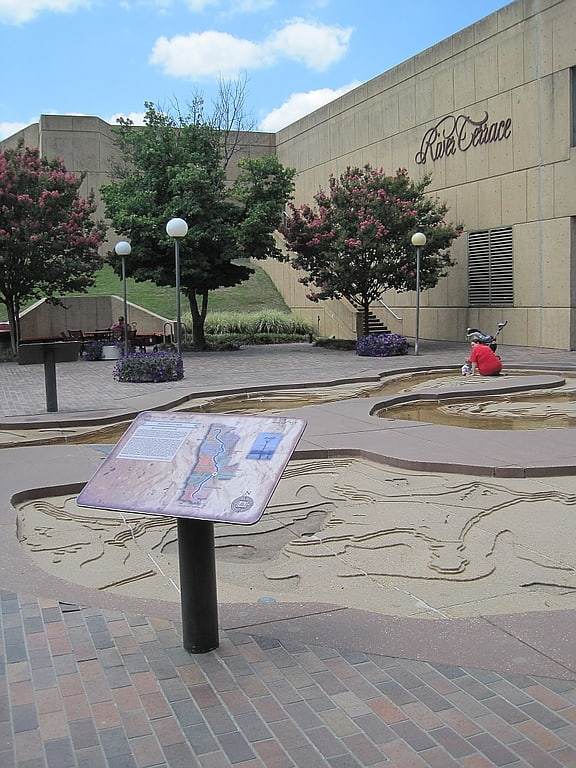
Museum in Memphis, Tennessee. The Mississippi River Museum is a museum located on Mud Island, in Memphis, Tennessee.[3]
National Civil Rights Museum

History of the racial equality movement. The National Civil Rights Museum is a complex of museums and historic buildings in Memphis, Tennessee; its exhibits trace the history of the civil rights movement in the United States from the 17th century to the present. The museum is built around the former Lorraine Motel, which was the site of the assassination of Martin Luther King Jr. in 1968; King died at St. Joseph's Hospital. Two other buildings and their adjacent property, also connected with the King assassination, have been acquired as part of the museum complex.
The museum reopened in 2014 after renovations that increased the number of multi-media and interactive exhibits, including numerous short movies to enhance features. The museum is owned and operated by the Lorraine Civil Rights Museum Foundation, based in Memphis. The Lorraine Motel is owned by the Tennessee State Museum and leased long term to the Foundation to operate as part of the museum complex. In 2016, the museum was honored by becoming a Smithsonian Affiliate museum. It is also a contributing property to the South Main Street Historic District of the National Register of Historic Places.[4]
Address: 450 Mulberry St, 38103-4214 Memphis (Downtown Memphis)
Sun Studio
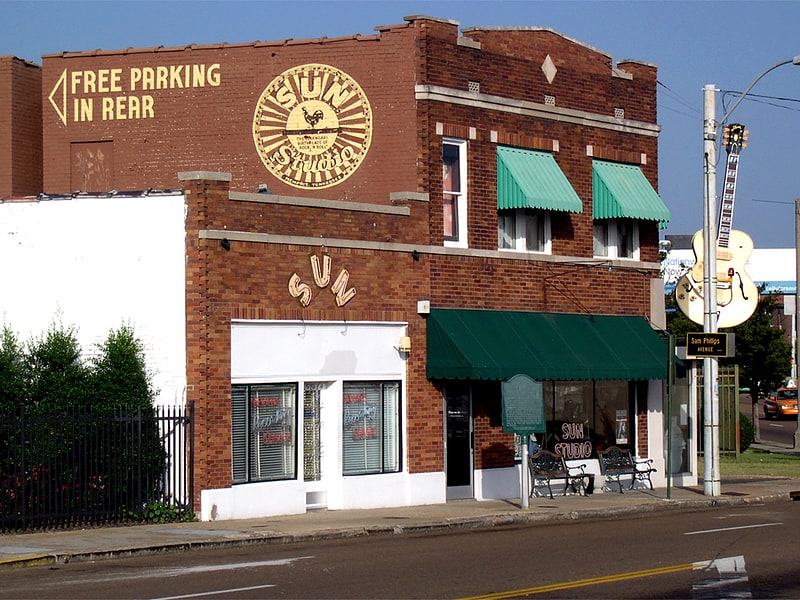
Legendary studio that hosted rock icons. Sun Studio is a recording studio opened by rock-and-roll pioneer Sam Phillips at 706 Union Avenue in Memphis, Tennessee, on January 3, 1950. It was originally called Memphis Recording Service, sharing the same building with the Sun Records label business. Reputedly the first rock and roll single, Jackie Brenston and his Delta Cats' "Rocket 88" was recorded there in 1951 with song composer Ike Turner on keyboards, leading the studio to claim status as the birthplace of rock & roll. Blues and R&B artists like Howlin' Wolf, Junior Parker, Little Milton, B.B. King, James Cotton, Rufus Thomas, and Rosco Gordon recorded there in the early 1950s.
Rock and roll, country music, and rockabilly artists, including Johnny Cash, Elvis Presley, Carl Perkins, Roy Orbison, Charlie Feathers, Ray Harris, Warren Smith, Charlie Rich, and Jerry Lee Lewis, recorded there throughout the mid-to-late 1950s until the studio outgrew its Union Avenue location. Sam Phillips opened the larger Sam C. Phillips Recording Studio, better known as Phillips Recording, in 1959 to replace the older facility. Since Phillips had invested in the Holiday Inn Hotel chain earlier, he also recorded artists starting in 1963 on the label Holiday Inn Records for Kemmons Wilson. In 1957, Bill Justis recorded his Grammy Hall of Fame song "Raunchy" for Sam Phillips and worked as a musical director at Sun Records.
In 1969, Sam Phillips sold the label to Shelby Singleton, and there was no recording-related or label-related activity again in the building until the September 1985 Class of '55 recording sessions with Carl Perkins, Roy Orbison, Jerry Lee Lewis, and Johnny Cash, produced by Chips Moman.
In 1987, the original building housing the Sun Records label and Memphis Recording Service was reopened, by Gary Hardy as "Sun Studio," a recording label and tourist attraction that has attracted many notable artists, such as U2, Def Leppard, Bonnie Raitt, and Ringo Starr.[5]
Address: 706 Union Ave, 38103-3218 Memphis (Downtown Memphis)
Beale Street
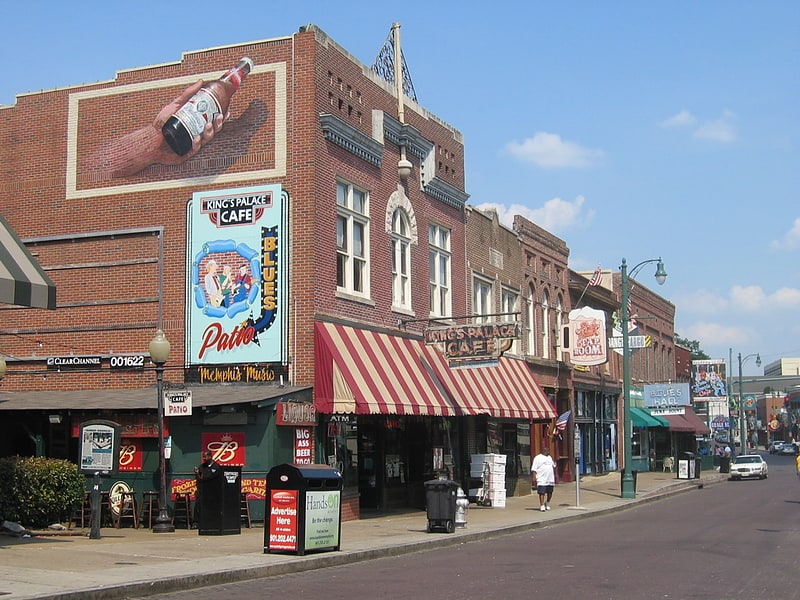
Street in Memphis, Tennessee. Beale Street is a street in Downtown Memphis, Tennessee, which runs from the Mississippi River to East Street, a distance of approximately 1.8 miles. It is a significant location in the city's history, as well as in the history of blues music. Today, the blues clubs and restaurants that line Beale Street are major tourist attractions in Memphis. Festivals and outdoor concerts frequently bring large crowds to the street and its surrounding areas.[6]
Children's Museum of Memphis

Museum in Memphis, Tennessee. The Children's Museum of Memphis is located in Midtown Memphis at 2525 Central Avenue in Memphis, Tennessee, USA.
CMOM’s mission is to create memorable learning experiences through the joy of play in hands-on exhibits and programs. The museum offers interactive exhibits and programs for children and their families. The museum houses over 20 hands-on exhibits.
The museum is open Tuesday - Sunday from 9 am to 5 pm. It is closed on Thanksgiving Day, Christmas Eve and Christmas Day.[7]
Address: 2525 Central Ave, 38104-5926 Memphis (Midtown)
Memphis Rock 'n' Soul Museum
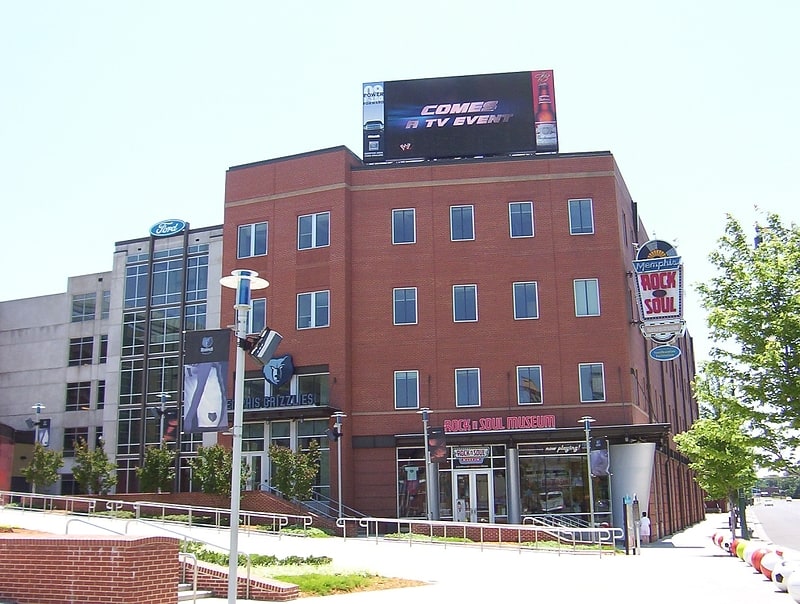
Museum in Memphis, Tennessee. The Memphis Rock ‘n’ Soul Museum is a music museum located at 191 Beale Street in Memphis, Tennessee. The museum tells the critical story of the musical pioneers who overcame racial and socio-economic obstacles to create the music that changed the cultural complexion of the world.[8]
Address: 191 Beale St, 38103-3715 Memphis (Downtown Memphis)
Blues Hall of Fame

Modern exhibits on blues music. The Blues Hall of Fame is a music museum located at 421 S. Main Street in Memphis, Tennessee. Initially, the "Blues Hall of Fame" was not a physical building, but a listing of people who have significantly contributed to blues music. Started in 1980 by the Blues Foundation, it honors people who have performed, recorded, or documented blues. The actual building for the hall opened to the public on May 8, 2015.[9]
Address: 421 S Main St, 38103-4464 Memphis (Downtown Memphis)
Tom Lee Park
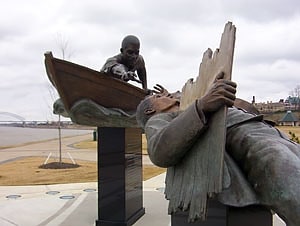
City park in Memphis, Tennessee. Tom Lee Park is a city park located to the immediate west of downtown Memphis, Tennessee, overlooking the Mississippi River. Encompassing about 30 acres parallel to the Mississippi River for about one mile, it offers panoramic views of the Mississippi River and the shores of Arkansas on the opposite side. The park is named after Tom Lee, an African-American riverworker, who saved the lives of 32 passengers of the sinking steamboat M.E. Norman in 1925.
Tom Lee Park is a popular location for walkers, joggers, roller bladers and cyclists, and hosts one event per year, the Beale Street Music Festival that kicks off Memphis in May.[10]
Address: 357 South Riverside Dr., 38103 Memphis (Downtown Memphis)
Stax Museum of American Soul Music
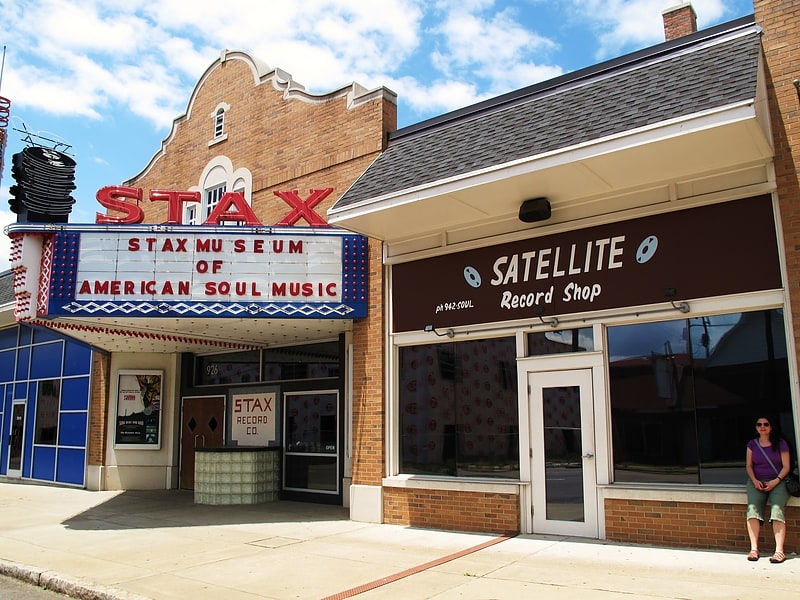
Museum in Memphis, Tennessee. The Stax Museum of American Soul Music is a museum located in Memphis, Tennessee, at 926 East McLemore Avenue, the former location of Stax Records. It is operated by the Soulsville Foundation, which also operates the adjacent Stax Music Academy and The Soulsville Charter School, all located on one campus.[11]
Address: 926 E McLemore Ave, 38106-3338 Memphis (South Memphis)
Hernando de Soto Bridge
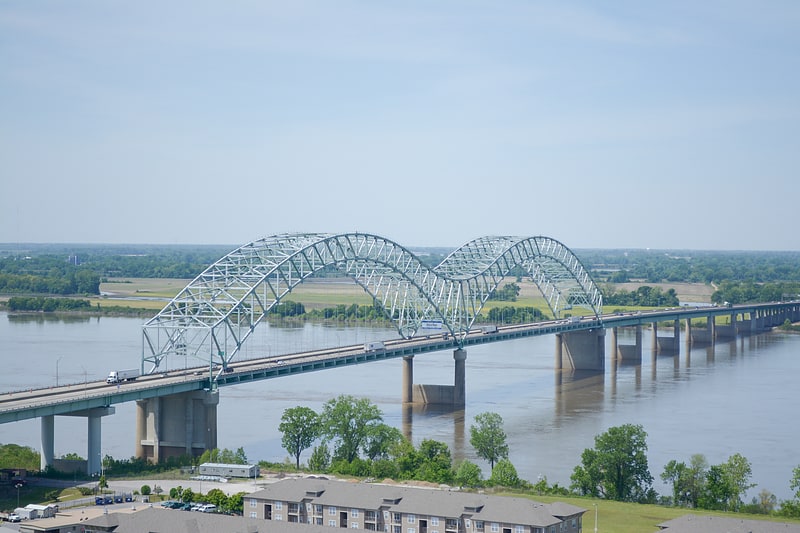
Tied-arch bridge. The Hernando de Soto Bridge is a tied-arch bridge carrying Interstate 40 across the Mississippi River between West Memphis, Arkansas, and Memphis, Tennessee. The design is a continuous cantilevered cable-stayed steel through arch, with bedstead endposts. Memphians also call the bridge the "New Bridge", as it is newer than the Memphis & Arkansas Bridge downstream, and the "M Bridge", due to its distinctive shape. It is of similar construction to the Sherman Minton Bridge between Louisville, Kentucky, and New Albany, Indiana.[12]
Levitt Shell

The Overton Park Shell is an open-air amphitheater located in Overton Park, Memphis, Tennessee. Elvis Presley gave his first paid concert there on July 30, 1954.
The Overton Park Shell was built in 1936 by the City of Memphis and the Works Progress Administration for $11,935, as part of the New Deal. Designed by architect Max Furbringer, it was modeled after similar shells in Chicago, New York, and St. Louis. The WPA built 27 band shells, the Overton Park Shell is one of only a few that still remain.
During the 1930s and 1940s, the Shell was the site of Memphis Open Air Theater orchestral shows, along with various light opera and musicals. However, on July 30, 1954, Elvis Presley opened for headliner Slim Whitman, and performed what music historians call the first-ever rock and roll show.
In the mid-1960s, the Shell was turned over to the Memphis Arts Center, who planned to raze it in order to build a $2 million theater. However, a campaign led by Noel Gilbert, long-time conductor of the Memphis Concert Orchestra, gathered 6,000 signatures in order to prevent its destruction. Later, in 1972, the Shell was nearly removed in order to build a parking garage, but was again saved by the outcry from the community.
In 1982, the National Conference of Christians and Jews proposed a restoration, and the Shell was renamed in honor of Raoul Wallenberg. However, they could not raise the necessary funds, so by 1984, the previous plan for a parking lot began once again. This time, the Shell was saved by Mayor Richard Hackett. He pledged to fund a renovation if a private group would spearhead an arts program.
In 1985, the Shell lay dormant for the first time in its history. In 1986, a corporation was formed by private citizens named Save Our Shell, Inc. For the following 20 years, Save Our Shell presented hundreds of free programs there.
In 2007, the Shell was renamed Levitt Shell at Overton Park and a large-scale renovation funded by the Levitt Foundation took place. The renovation was conducted by Memphis firm Askew Nixon Ferguson Architects with state-of-the-art audio and visual design. With the completion of the renovations on September 8, 2008, free concerts are now once again held in the Shell. The Shell offers concerts on Thursday, Friday, Saturday, and Sunday nights during its spring and fall seasons. In the summer of 2011, Indie Memphis debuted The Concert Film Series, presenting free concert films for the public on weekends during the summer months.
On March 3, 2022, the Levitt Shell was renamed back to its historic name of the Overton Park Shell, continuing its mission of free music under the stars for the entire community.[13]
Address: Overton Park, Memphis, 38112 Memphis (Midtown)
Liberty Bowl Memorial Stadium
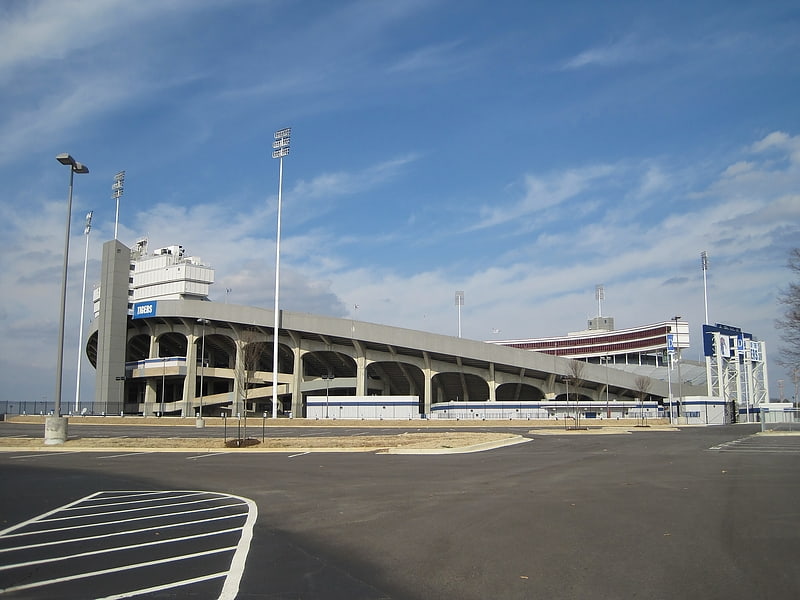
Stadium in Memphis, Tennessee. Liberty Bowl Memorial Stadium, originally named Memphis Memorial Stadium, is a football stadium located at the former Mid-South Fairgrounds in the Midtown area of Memphis, Tennessee, United States. The stadium is the site of the annual Liberty Bowl, and is the home field of the University of Memphis Tigers football team of the American Athletic Conference. It has also been the host of several attempts at professional sports in the city, as well as other local football games and other gatherings.[14]
Metal Museum
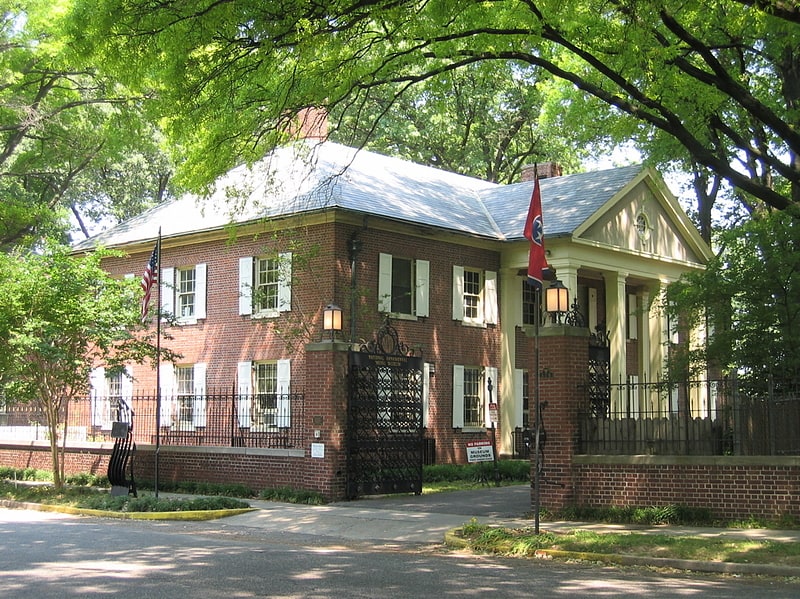
Museum in Memphis, Tennessee. The National Ornamental Metal Museum, now called the Metal Museum, is a museum in Memphis, Tennessee. Founded by artist-blacksmith James Wallace, the museum is devoted to exhibitions of metalwork and public programs featuring metalsmiths.[15]
Address: 374 Metal Museum Dr, 38106-1514 Memphis (South Memphis)
AutoZone Park
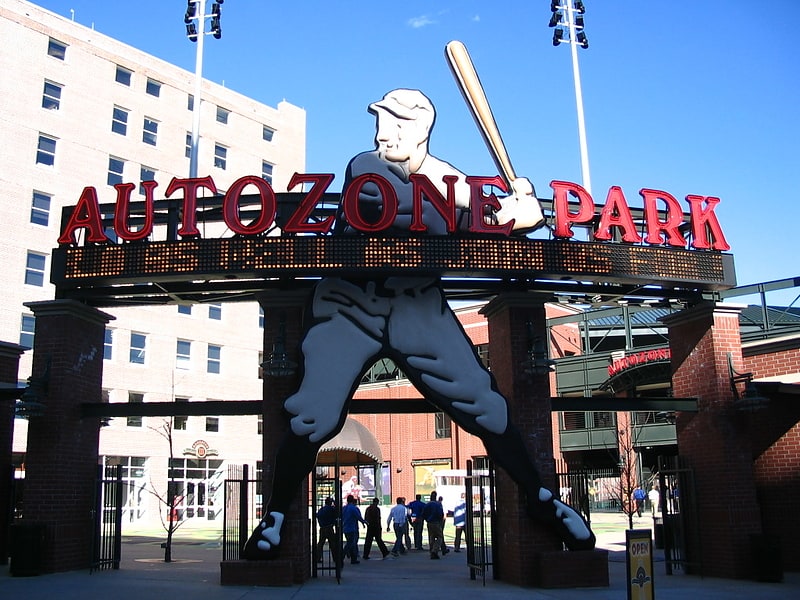
Stadium in Memphis, Tennessee. AutoZone Park is a Minor League Baseball stadium located in downtown Memphis, Tennessee, and is home to the Memphis Redbirds of the International League and Memphis 901 FC of the USL Championship. The Redbirds are the Triple-A affiliate of Major League Baseball's St. Louis Cardinals. In 2009, the stadium was named Minor League Ballpark of the Year by Baseball America.[16]
Address: Union Ave and Third Ave, 38103 Memphis (Downtown Memphis)
St. Mary's Episcopal Cathedral
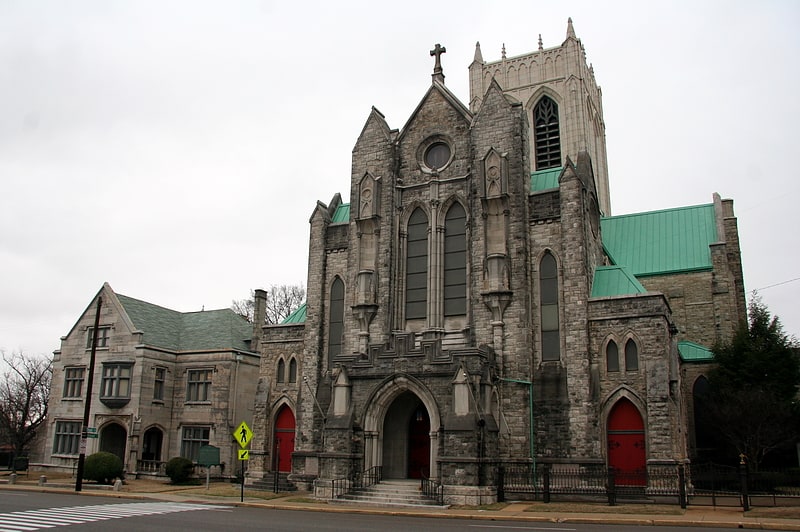
Episcopal church in Memphis, Tennessee. St. Mary's Episcopal Cathedral, designed by Memphis architect Bayard Snowden Cairns, located near downtown Memphis, Tennessee, is the cathedral church of the Episcopal Diocese of West Tennessee and the former cathedral of the old statewide Episcopal Diocese of Tennessee.[17]
Address: 700 Poplar Ave, 38105 Memphis (Downtown Memphis)
Beale Street Baptist Church
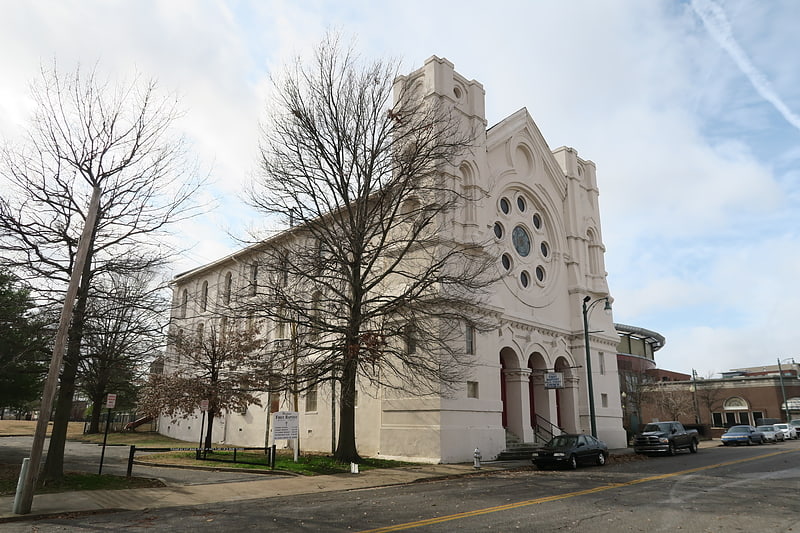
Baptist church in Memphis, Tennessee. Beale Street Baptist Church, also known as, First Baptist Church or Beale Avenue Baptist Church, is a historic church on Beale Street, built by a congregation of freed slaves in Memphis, Tennessee. It was designed by the prominent Memphis architectural firm Jones & Baldwin, a partnership between Edward Culliatt Jones and Matthias Baldwin. Its foundation stone was laid in 1869, and it was constructed between 1871 and 1885. In the late 1880s, the church also housed the newspaper office of Ida B. Wells, the famous civil rights journalist. Over the years, Ulysses S. Grant and Teddy Roosevelt made visits to the church.
The structure was added to the National Register of Historic Places in 1971, and was included in an enlargement of the National Historic Landmark District of Beale Street in 1993.[18]
Address: 379 Beale St, 38103-3105 Memphis (Downtown Memphis)
Pink Palace Museum
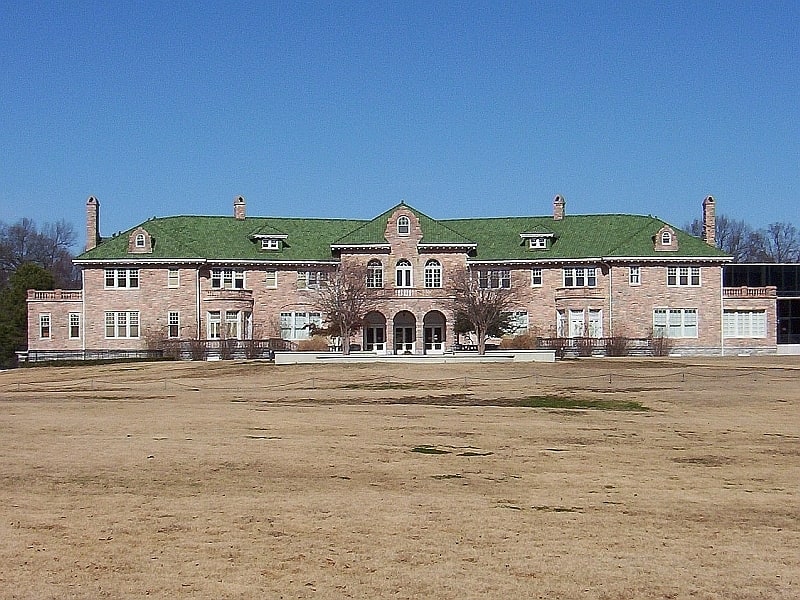
Museum in Memphis, Tennessee. The Museum of Science & History - Pink Palace in Memphis, Tennessee, serves as the Mid-South's major science and historical museum and features exhibits ranging from archeology to chemistry. Over 240,000 people visit the museum each year.
The museum is part of the Museum of Science & History - Memphis, a collection of historic, educational, and technological attractions maintained by the City of Memphis and Memphis Museums, Inc. The Lichterman Nature Center, the first accredited nature center in the United States, is part of the Museum, as well as the Coon Creek Science Center, an education center which is open to organized groups and features a fossil site.
The Mallory-Neely House and Magevney House are also part of the Museum. The Mallory-Neely House is a three-story Italianate Victorian mansion built in 1852, and features 25 rooms and most of its original furnishings. The Magevney House, an 1830s cottage furnished as it might have been in 1850, is one of the city's oldest remaining residences.
The AutoZone Dome at the Sharpe Planetarium, housed at the Museum, features an 165-seat theater-in-the-round auditorium and offers public shows that project star fields, visual images, and laser lights on a domed ceiling. The Crew Training International 3D Giant Theater opened on January 21, 1995 and features a four-story high movable screen. The Museum of Science & History - Pink Palace, the Sharpe Planetarium, and the Crew Training International 3D Giant Theater are accredited members of the American Alliance of Museums.[19]
Address: 3050 Central Ave, 38111-3316 Memphis (UDistrict)
Belz Museum of Asian & Judaic Art
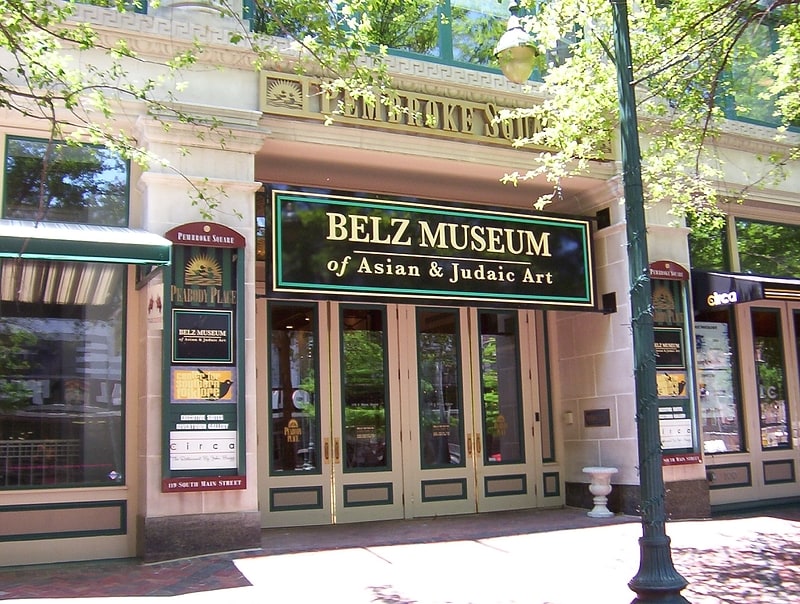
Museum in Memphis, Tennessee. The Belz Museum of Asian and Judaic Art is located at 119 South Main Street at the intersection of Gayoso Avenue in Memphis, Tennessee, USA. The museum was opened in 1998 as the Peabody Place Museum and in January 2007 it received its present name.
The museums collection is based on the private collection of Memphis developers Jack and Marilyn Belz, who owned the Peabody Hotel and Peabody Place. The Belz features over 1,000 objects, including works of jade, tapestries, furniture, carvings, and other historical and artistic objects. The museum also houses one of the finest collections of pieces from the Qing dynasty.[20]
Address: 119 S Main St, 38103-3647 Memphis (Downtown Memphis)
Orpheum Theatre

Theatre in Memphis, Tennessee. The Orpheum Theatre, a 2,308-seat venue listed on the National Register of Historic Places, is located in downtown Memphis, Tennessee, on the southwest corner of the intersection of South Main and Beale streets. The Orpheum, along with the Halloran Centre for Performing Arts & Education, compose the Orpheum Theatre Group, a community-supported nonprofit corporation that operates and maintains the venues and presents education programs.[21]
Address: Memphis, 203 South Main Street
Memphis Brooks Museum of Art
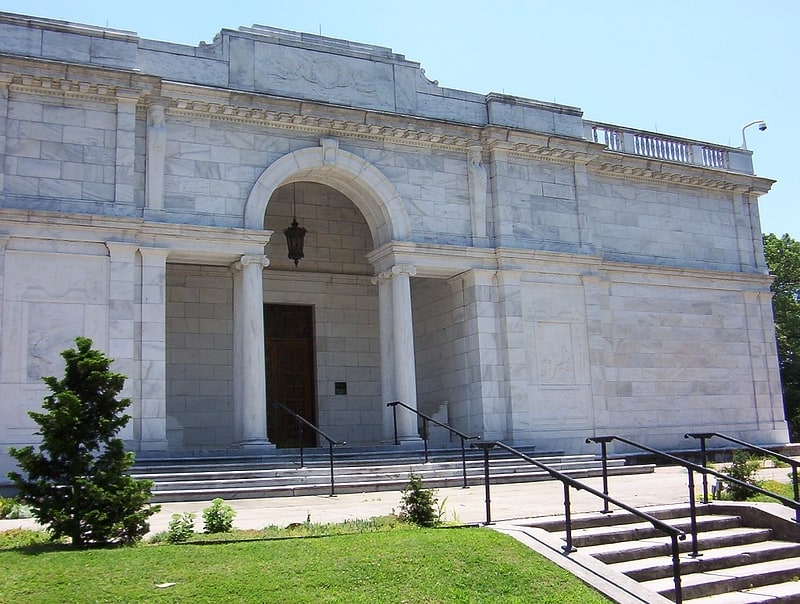
Museum in Memphis, Tennessee. Memphis Brooks Museum of Art is an art museum in Memphis, Tennessee. The Brooks Museum, which was founded in 1916, is the oldest and largest art museum in the state of Tennessee. The museum is a privately funded nonprofit institution located in Overton Park in Midtown Memphis.[22]
Address: 1934 Poplar Ave, 38104-2765 Memphis (Midtown)
Fire Museum of Memphis
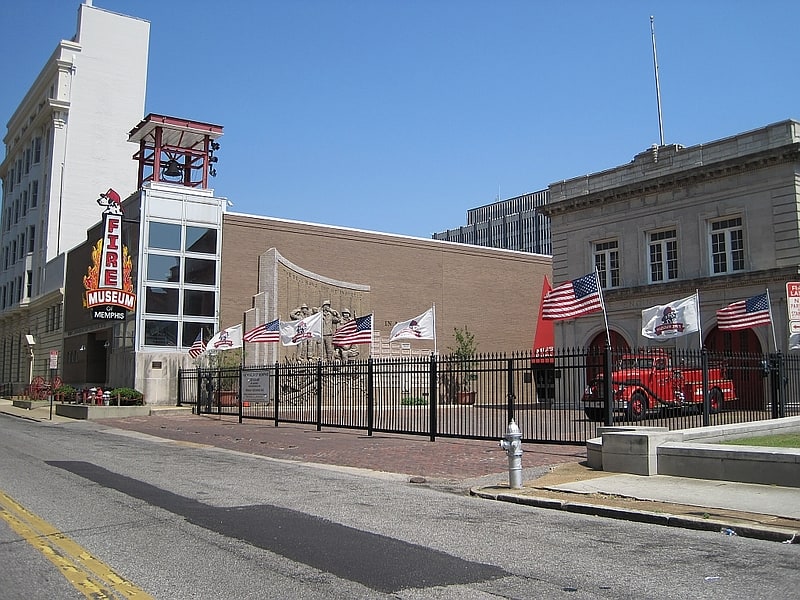
Museum in Memphis, Tennessee. The Fire Museum of Memphis is located in Fire Engine House No. 1 on 118 Adams Avenue in Memphis, Tennessee, USA. In the heart of downtown Memphis, the FMOM is considered the premiere fire museum in the country, dedicated to documenting and promoting the local history of fire fighting and educating the public in fire and life safety. The FMOM hosts fire departments both nationally and internationally in their quest to emulate their success. Working with the University of Memphis to validate their Fire Prevention Public Education Curriculum, the Fire Museum of Memphis is the first of its kind to capture data, testing their Fire Prevention effectiveness. Local schools are offered free admission with bus transportation reimbursement, drastically impacting a fire fatality rate that was two and one half times the national average when the museum opened in October, 1998. The museum provides interactive exhibits as well as video documentation. In 2014, the museum underwent 1.5 million dollars in renovations.[23]
Address: 118 Adams Ave, 38103-2012 Memphis (Downtown Memphis)
The Cotton Museum

Museum in Memphis, Tennessee. The Cotton Museum, located in Memphis, Tennessee, U.S., is an historical and cultural museum that opened in March 2006 on the former trading floor of the Memphis Cotton Exchange at 65 Union Avenue in downtown Memphis.
The mission of the Cotton Museum is to share the story of the cotton industry and its many influences on the daily life, arts, and the development of the mid-South region. The museum highlights artifacts through interpretive exhibits, educational programs, and research archives that help tell the story of cotton and cotton trading, from crop to becoming fabric.
The Cotton Museum preserves the history of the cotton business and its impact on economics, history, society and culture, and science and technology. The museum's exhibits are appropriate for field trips for middle schoolers and older, and provide visitors context for other attractions in the city.[24]
Address: 65 Union Ave, 38103-5196 Memphis (Downtown Memphis)
Dixon Gallery and Gardens
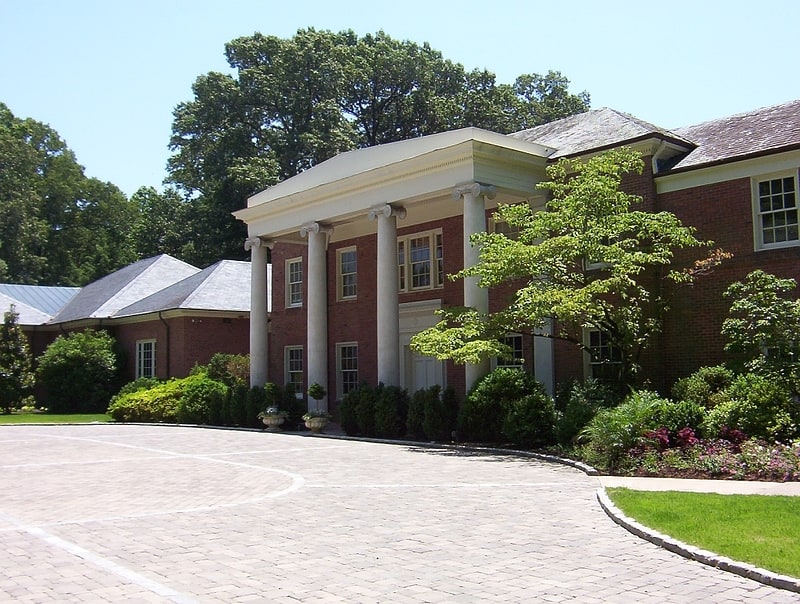
Art museum in Memphis, Tennessee. The Dixon Gallery and Gardens is an art museum within 17 acres of gardens, established in 1976, and located at 4339 Park Avenue, Memphis, Tennessee, United States.
The museum focuses on French and American impressionism and features works by Monet, Degas, and Renoir, Pierre Bonnard, Mary Cassatt, Marc Chagall, Honoré Daumier, Henri Fantin-Latour, Paul Gauguin, Henri Matisse, Berthe Morisot, Edvard Munch, Auguste Rodin, and Alfred Sisley, as well as an extensive collection of works by French Impressionist artist Jean-Louis Forain. The museum also houses the Stout Collection of 18th-century German porcelain. With nearly 600 pieces of tableware and figures, it is one of the finest such collections in the United States.
The Dixon also features a comprehensive schedule of original and traveling exhibitions of fine art and horticulture.
The museum sits within four principal outdoor sculpture gardens with Greco-Roman sculpture. Its site was acquired by the Dixons in 1939, and landscaped in the English Garden style with open vistas adjacent to smaller, intimate formal spaces. The major areas within the gardens are the Cutting Garden, Formal Garden, South Lawn, and Woodland Gardens.[25]
Address: 4339 Park Ave, 38117-4626 Memphis (East Memphis)
Grace-St. Luke's Episcopal Church
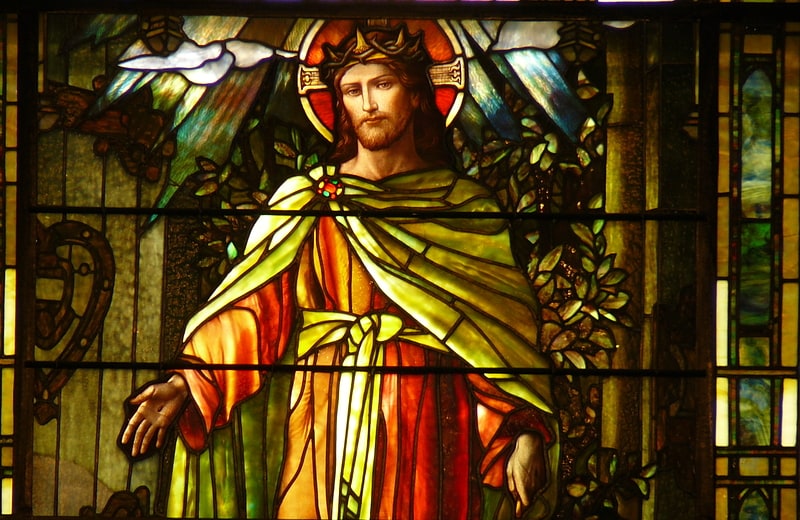
Episcopal church in Memphis, Tennessee. Grace-St. Luke's Episcopal Church is an historic church in Midtown Memphis, Tennessee. The church's history dates back to the mid-19th century and the current structure—located in Memphis' Central Gardens Historic Preservation District at 1720 Peabody Avenue—was constructed in 1912.
Today the parish is active and is known both for its progressive hunger ministries and its formal worship and music.
The church is part of the Episcopal Diocese of West Tennessee.[26]
Address: 1720 Peabody Ave, 38104 Memphis (Midtown)
Memorial Park Cemetery
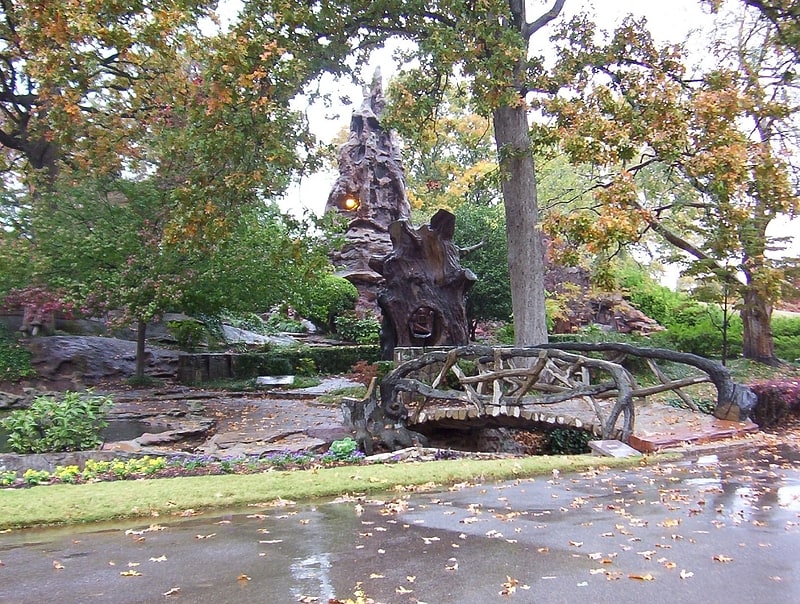
Cemetery. Memorial Park Cemetery was founded in 1924 by E. Clovis Hinds on initial 54 acres. It is located at 5668 Poplar Avenue in Memphis, Tennessee.
Different species of trees of different ages, as well as bushes, can be found throughout the cemetery, enhancing the atmosphere of a park-like setting.
The cemetery is noted for its Crystal Shrine Grotto, a hand-built cave depicting Biblical scenes built by artist Dionicio Rodriguez.
The cemetery is owned by the private death care industry company, NorthStar Memorial Group, based in Houston.[27]
Address: 5668 Poplar Ave, 38119-3839 Memphis (East Memphis)
Memphis Railroad and Trolley Museum
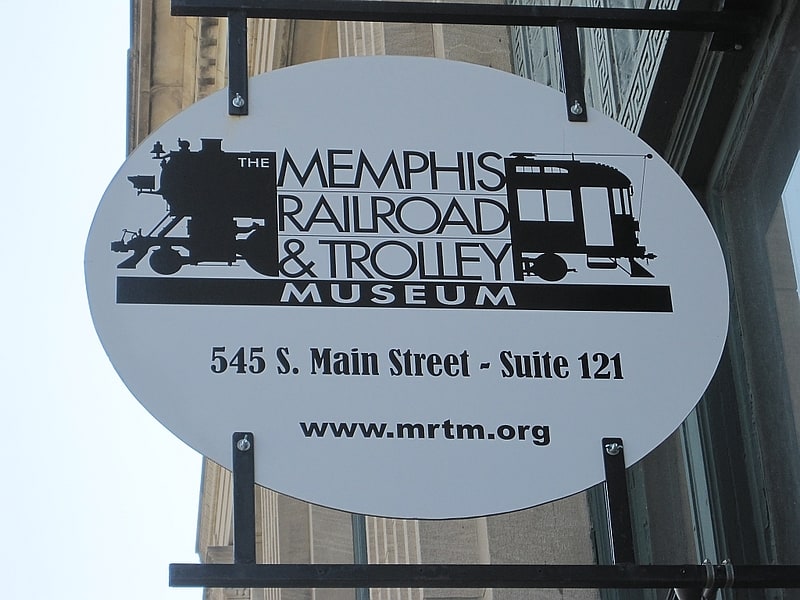
The Memphis Railroad & Trolley Museum is located at 545 South Main Street on the ground floor of the Central Station in Memphis, Tennessee, USA. The museum is dedicated to document the local history of Railroad and the Memphis Trolleys. The museum provides static exhibits as well as video documentation and railroad model dioramas.[28]
Address: 545 S Main St, 38103-4819 Memphis (Downtown Memphis)
Harahan Bridge

Cantilever bridge in Proctor, Arkansas. The Harahan Bridge is a cantilevered through truss bridge that carries two rail lines and a pedestrian bridge across the Mississippi River between West Memphis, Arkansas and Memphis, Tennessee. The bridge is owned and operated by Union Pacific Railroad and is the second longest pedestrian/bicycle bridge in the United States. It was built with roadways cantilevered off the sides of the main structure for vehicles. These roadways are owned by the cities of Memphis, Tennessee and Crittenden County, Arkansas, and were used from 1917–1949, until the Memphis & Arkansas Bridge opened 400 feet south of the Harahan. The bridge was named in honor of railroad executive James Theodore Harahan, former president of the Illinois Central Railroad, who was killed in a railroad accident during the construction of the bridge. In February 2011, Union Pacific Railroad officials agreed to the idea of converting the 1917 roadways into a bicycle-pedestrian walkway across the river. In June 2012, Memphis was awarded a $14.9 million federal grant to build the walkway. The overall project was expected to cost $30 million, of which about $11 million was used for the Harahan Bridge portion. Construction was completed in 2016.[29]
Temple Israel
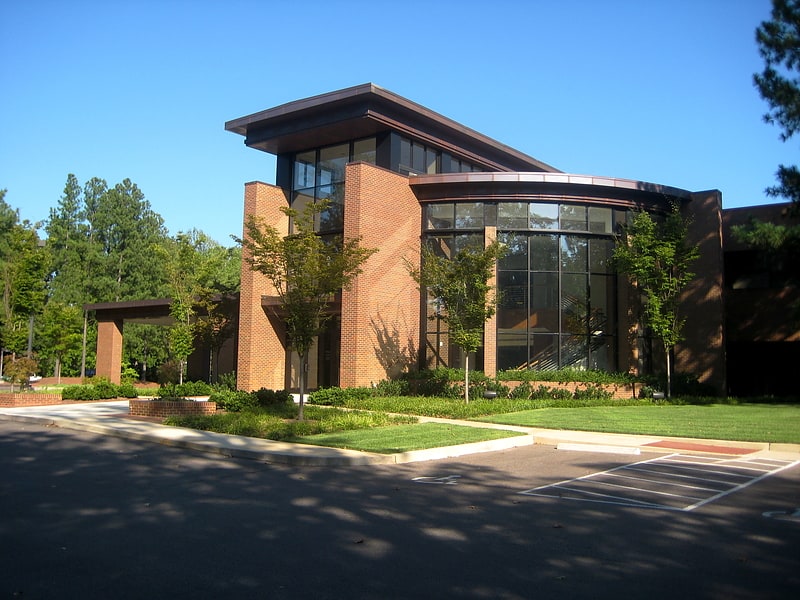
Synagogue in Memphis, Tennessee. Temple Israel is a Reform Jewish congregation in Memphis, Tennessee, in the United States. It is the only Reform synagogue in Memphis, the oldest and largest Jewish congregation in Tennessee, and one of the largest Reform congregations in the U.S. It was founded in 1853 by mostly German Jews as Congregation B'nai Israel. Led initially by cantors, in 1858 it hired its first rabbi, Jacob Peres, and leased its first building, which it renovated and eventually purchased.
Peres was fired in 1860 because he opened a store that conducted business on Saturdays, the Jewish Sabbath. He was replaced by Simon Tuska, who moved the congregation from Orthodox to Reform practices. Tuska died in 1871, and was succeeded by Max Samfield; under his leadership, the synagogue was one of the founding members of the Union for Reform Judaism. In 1884, Children of Israel completed a new building, and membership grew rapidly. Samfield died in 1915, and was succeeded by Bill Fineshriber, an outspoken supporter of women's suffrage and equal rights for African Americans. The following year the congregation moved to a new building, where membership continued to grow. Fineshriber left in 1924, and was succeeded by Harry Ettelson.
The synagogue experienced difficulty during the Great Depression—membership dropped, the congregational school was closed, and staff had their salaries reduced—but conditions had improved by the late 1930s. In 1943 the synagogue changed its name to Temple Israel, and by the late 1940s membership had almost doubled from its low point in the 1930s. Ettelson retired in 1954, and was succeeded by Jimmy Wax.
Wax became known for his activism during the Civil Rights Movement. Though some members—particularly those whose families had lived in the South for generations—had segregationist views, others were prominent in the fight for black civil rights. During Wax's tenure, most of Temple Israel's members moved far from the existing synagogue, and in 1976 the congregation constructed its current building, closer to where most members lived. Wax retired in 1978, and was succeeded by Harry Danziger, who brought traditional practices back to the congregation. He retired in 2000, and was succeeded by Micah Greenstein. As of 2021, Temple Israel has almost 1,450 member families. Greenstein is the Senior Rabbi, and the cantorial soloist is Happie Hoffman.[30]
Address: 1376 E Massey Rd, 38120 Memphis (East Memphis)
Shelby Farms

Park in Shelby County, Tennessee. Shelby Farms is a public park located in Shelby County, Tennessee, United States, just east of the city of Memphis. It is one of the twenty largest urban parks, at a size of 4,500 acres and covers more than five times the area of Central Park in New York City with 843 acres.
Lakes, natural forests, and wetlands provide natural habitats for many smaller species close to an urban metropolitan area. Wildlife can be observed in their natural environment from the many trails in the park. Shelby Farms park is home to a bison herd.
The land that forms Shelby Farms park was derived from property that had been privately owned in the 19th century. In 1825, humanist reformer Frances Wright founded the Nashoba Commune on 670 acres that were north of Wolf River that are now part of Shelby Farms Park and Agricenter Internationals. The purpose of the commune was to provide education in practical and cultural skills in order to emancipate slaves after they had worked off their costs. Remains of a settlement from the late 19th century are still present in the modern-day park.
From 1929 until 1964, Shelby Farms was used as a penal farm operated by the Shelby County Government.
Shelby Farms was opened for recreational purposes in the 1970s. In 2007, a public and private non-profit partnership was established to provide for the daily operation of the park and to plan for its future use.
In 2008, a masterplan was put in place for the redesign of the park. The re-design provided additional hiking and biking trails as well as more opportunities for boating in a much enlarged Hyde Lake, renamed Patriot Lake.[31]
Downtown Memphis
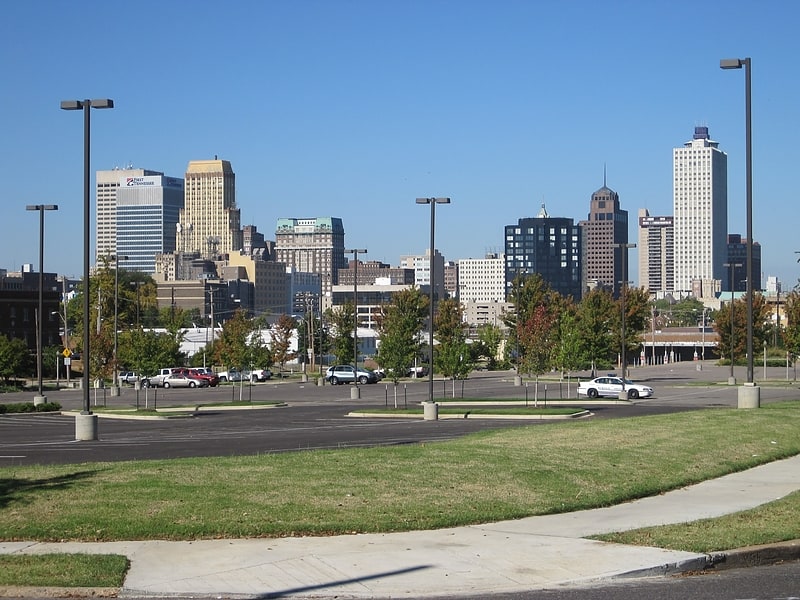
Downtown Memphis, Tennessee is the central business district of Memphis, Tennessee and is located along the Mississippi River between Interstate 40 to the north, Interstate 55 to the south and I-240 to the east, where it abuts Midtown Memphis.
It is home to the Memphis Redbirds, the AAA affiliate of the St. Louis Cardinals, and the Memphis Grizzlies NBA team.[32]
Memphis Botanic Garden
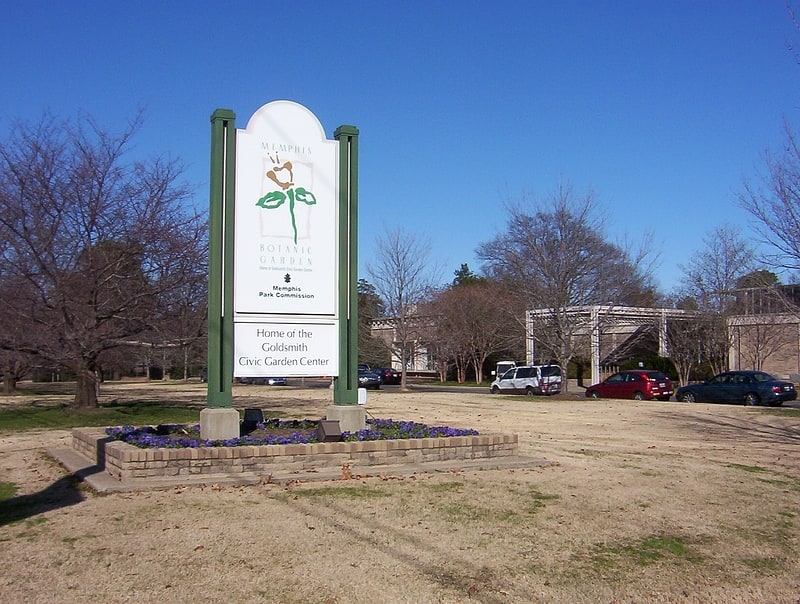
Botanical garden in Memphis, Tennessee. The Memphis Botanic Garden is a 96-acre botanical garden located in Audubon Park at 750 Cherry Road, Memphis, Tennessee.
Memphis Botanic Garden is open to the public daily, where guests can take a stroll through various gardens on the grounds. There is also a children's garden, called my Big Backyard, which is very popular with Memphians and out of towners.
Memphis Botanic Garden hosts many community events each year, such as the Daffodil Dash Race, The Family Egg Hunt, and Mother's Day Jazz Brunch. The garden also offers a range of educational programs for youth and adults. Plant sales and a concert series are held throughout the year to benefit its educational and horticultural programs.[33]
Address: 750 Cherry Rd, 38117-4699 Memphis (East Memphis)
T. O. Fuller State Park
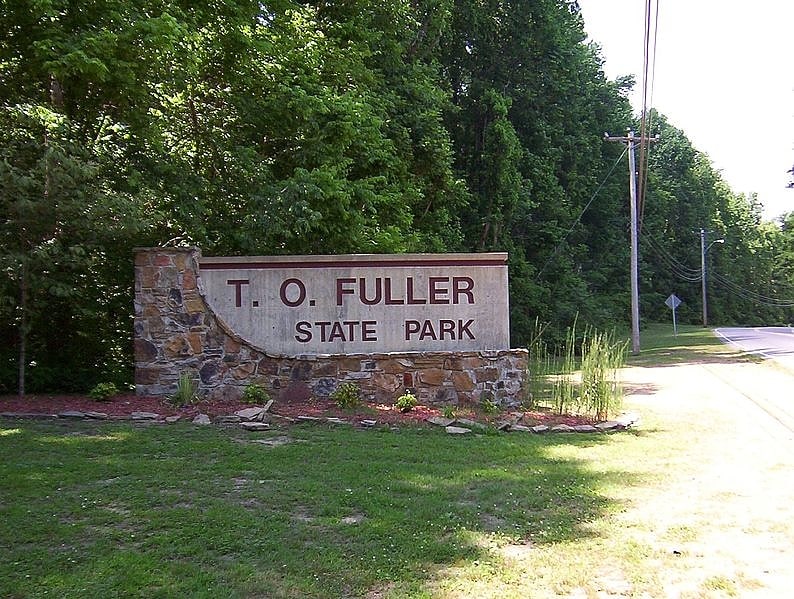
State park in Memphis, Tennessee. T.O. Fuller State Park is a state park in the city of Memphis, Tennessee, USA. It consists of 1,138 acres of mostly forest located in South Memphis on Mitchell Road. It is the only state park within the city limits and is suitable for wildlife.
The park is named in honor of Dr. Thomas O. Fuller, who spent his life empowering and educating African Americans. The park facilities were originally built for the use of African Americans in the Great Depression by the Civilian Conservation Corps (CCC). It was the second state park in the USA that was open to African Americans.
CCC camp number 1464-SP-10, which was composed of African Americans, initiated construction of the park facilities in 1938. During excavation for a proposed swimming pool in 1940, CCC workers unearthed evidence of a prehistoric village. The site has since been developed as Chucalissa Indian Village and includes a village, preserved archeological excavations and the C.H. Nash Museum at Chucalissa.[34]
Burkle Estate
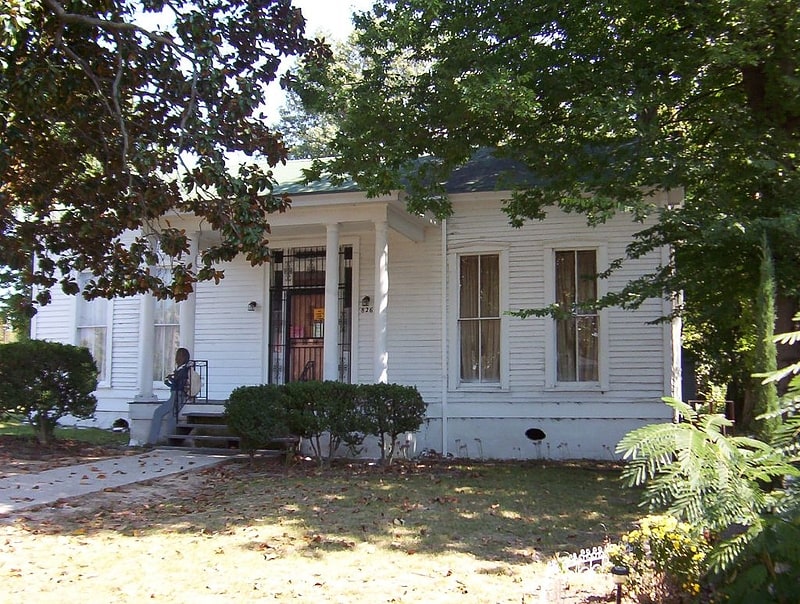
Museum in Memphis, Tennessee. The Burkle Estate is a historic home at 826 North Second Street in Memphis, Tennessee. It is also known as the Slavehaven. Although disputed by some historians, the Burkle Estate is claimed by some to have been part of the Underground Railroad- a secret network of way stations to help slaves escape to freedom in the northern states. The house was constructed in 1849 by a German immigrant by the name of Jacob Burkle.
Since 1997 the estate is home to the Slave Haven Underground Railroad Museum.[35]
Address: 826 N 2nd St, 38107-2302 Memphis (North Memphis)